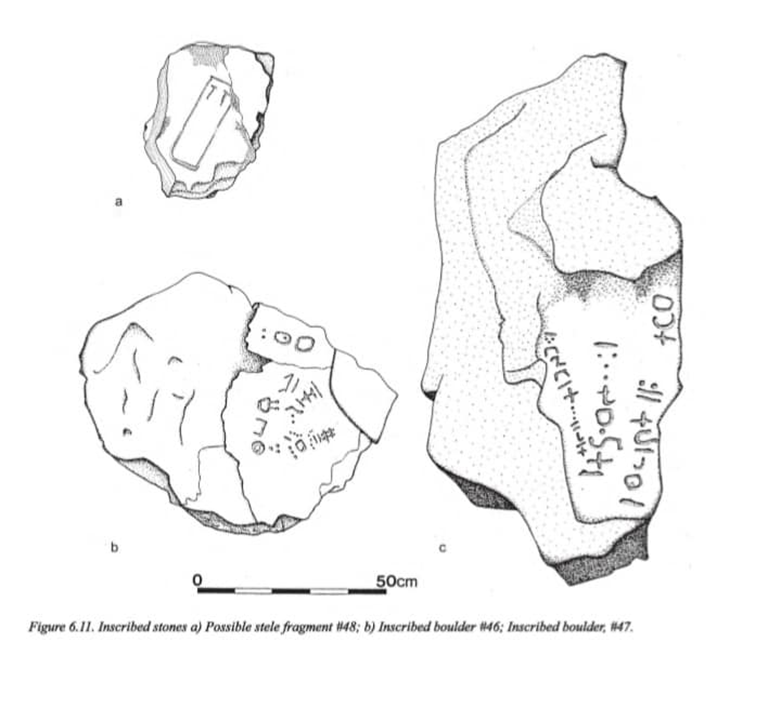Garmentian civilization

The Garmantine civilization used the ancient Libyan language and letters as letters that accompanied funeral rituals. Tombstones were inscribed in the Amazigh language using Libyan letters, which formed a style of their own that was widely used in Libya. The Libyans developed these letters and reached the peak of development in the Libyan writing found in Abungim, which was called the Pungimian script. It seemed to have a commercial nature

This writing continued, and the Tuareg inherited it from their ancestors, the Jarmant, and it remained in use in Fezzan, and the writing of witnesses with it continued until recent periods in Ghadames.
The Garamants (also: Garamants, or Garamants) are one of the local peoples who settled in southwestern Libya, and part of southern Algeria, a region that the Tuareg call Azjar. Information about the history of the Garmentians is tinged with doubt. Although Herodotus’s information goes back to the fifth century BC, he only provided us with a little of it about the Garmentians. However, architectural monuments dating back to the time before Herodotus have been discovered in many sites in Fezzan, and stone tools dating back to the time of the Acheulean and Aterian cultures (from 100 thousand to 30 thousand years BC), and many sites are still awaiting discovery. There are also many pictures and rock drawings, although scientists do not believe that they date back to a time prior to the Neolithic era.
The first recorded written reference about the Garmentians was created by Herodotus, and after him a gap occurred that was not truly filled until Pliny wrote about Cornelius Balbus’ campaign against the Garmentians. The Garmentians developed a written script called Tifinagh, spoke one of the major dialects of the Berber language group, and are believed to be the ancestors of the Tuareg who remain in the same region to this day.

The Garmentians, as described and named by Herodotus, Bellini, and other authors of the classical era, were certainly Berbers. Sergei believes that the Garamantes are close relatives of the Tuareg, and Bess called them a white race inhabiting the Mediterranean basin, with a tendency toward browning.
It is possible that the Garmant are of Libyan origin, based on the scientific studies conducted on them and on the Libyans together, and based on the similarities between them and the inhabitants of the Western Sahara in Egypt and on the similarity that exists between them and the contemporary Tuareg.

Their civilization
Azjer is the name given by the people of the Sahara Desert to the homeland that forms the heart of this continent, forming the nucleus that was the cradle of human civilization, as proven by archaeological excavations and the rich artistic discoveries embedded on the walls of mountain ranges such as Tassili, Tadrarat, and Jebel Ouwaynat, forming the oldest and most encyclopedic historical museum of plastic arts in the world. And epic So, if it were read in the way in which the inscriptions of a civilization such as the Egyptian civilization were read, the proof would be revealed not only of the close relationship between the two civilizations, but of the primacy of the Sahara desert civilizations over the civilization of ancient Egypt and after it the civilizations of the ancient world, despite the fact that the Greek mind did not skimp on such proofs. Archaeological discoveries have demonstrated the identity of the primordial global desert as a cradle of human existence on land through the seven-million-year-old skull, and through other scientific evidence that has confirmed its reality as a focus from which migrations to all continents began. Perhaps the latest of these discoveries is genetics, which has proven the African identity of even Chinese people!

The Garmantine civilization, which is the Azger civilization, is the civilization to which the first human known to history belonged, as the sources say, A portion of the Garmentians, this major primitive tribe, was dispersed and moved to the Nile Valley in the east, Mesopotamia (Sumer), and to Greece and Latin countries in the north, establishing the largest diaspora known in history. The Greeks acknowledged their affiliation to the Garmentians geographically and ethnically, and they did not deny this affiliation culturally either by acknowledging their borrowing of their religion and their gods, headed by the goddess “Athena,” who is the “Tanet” of the desert, as Herodotus confirms. And if this was the case, then the Egyptians would have done so as well. Their way, I mean through their rituals that did not recognize any other country as the West, in their worldly prayers as well as in their death supplications, as we inherited them in the texts of the pyramids called in the language of Genesis ((Part Um Hru)) Which means ((the road to the sanctuary of the god Heru)), which is a venerable place located in the Tasiliy Desert. The priests of Azger had made it a sanctuary for the desert god of the gods ((Heru)).
Source: websites

